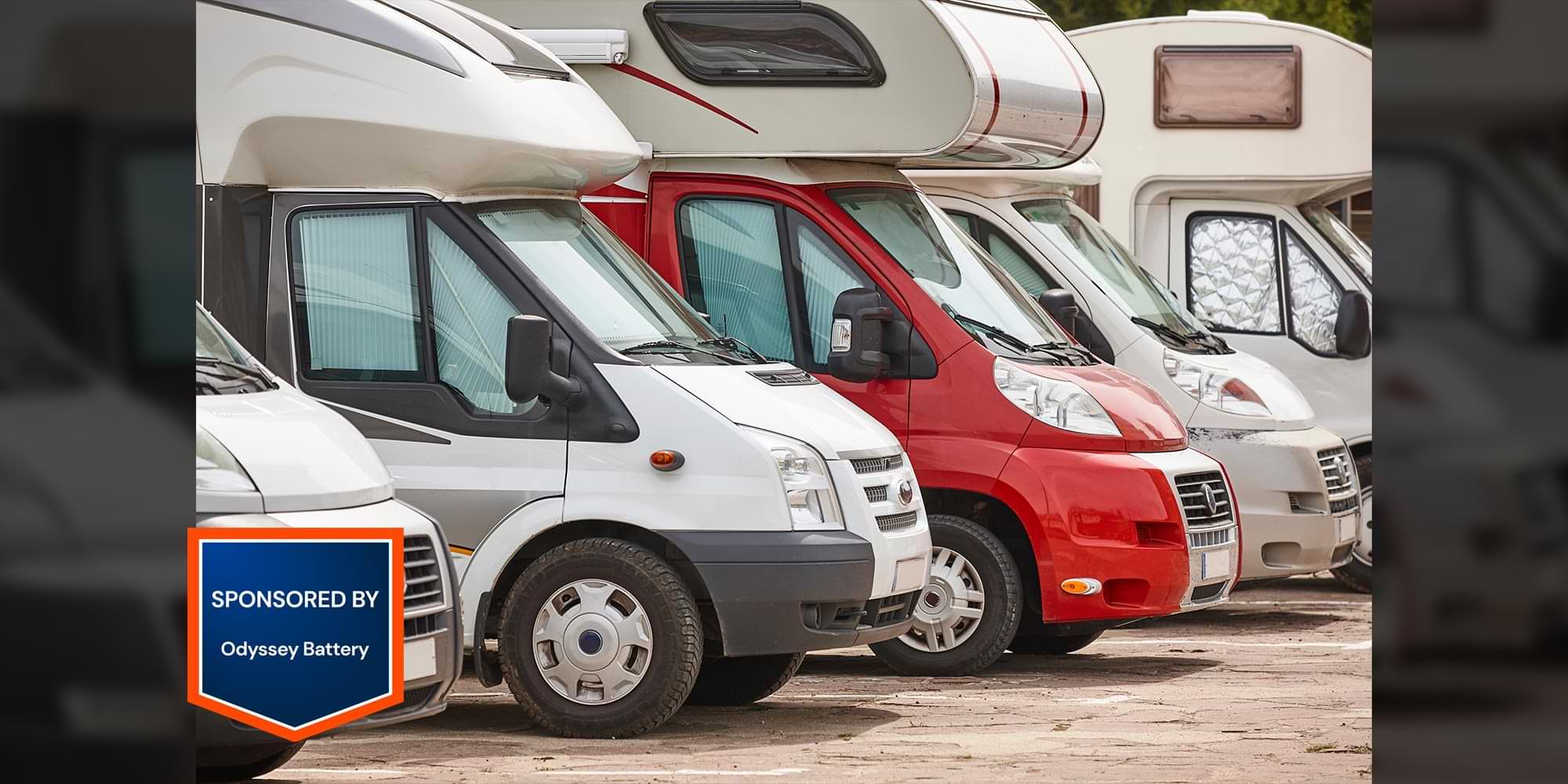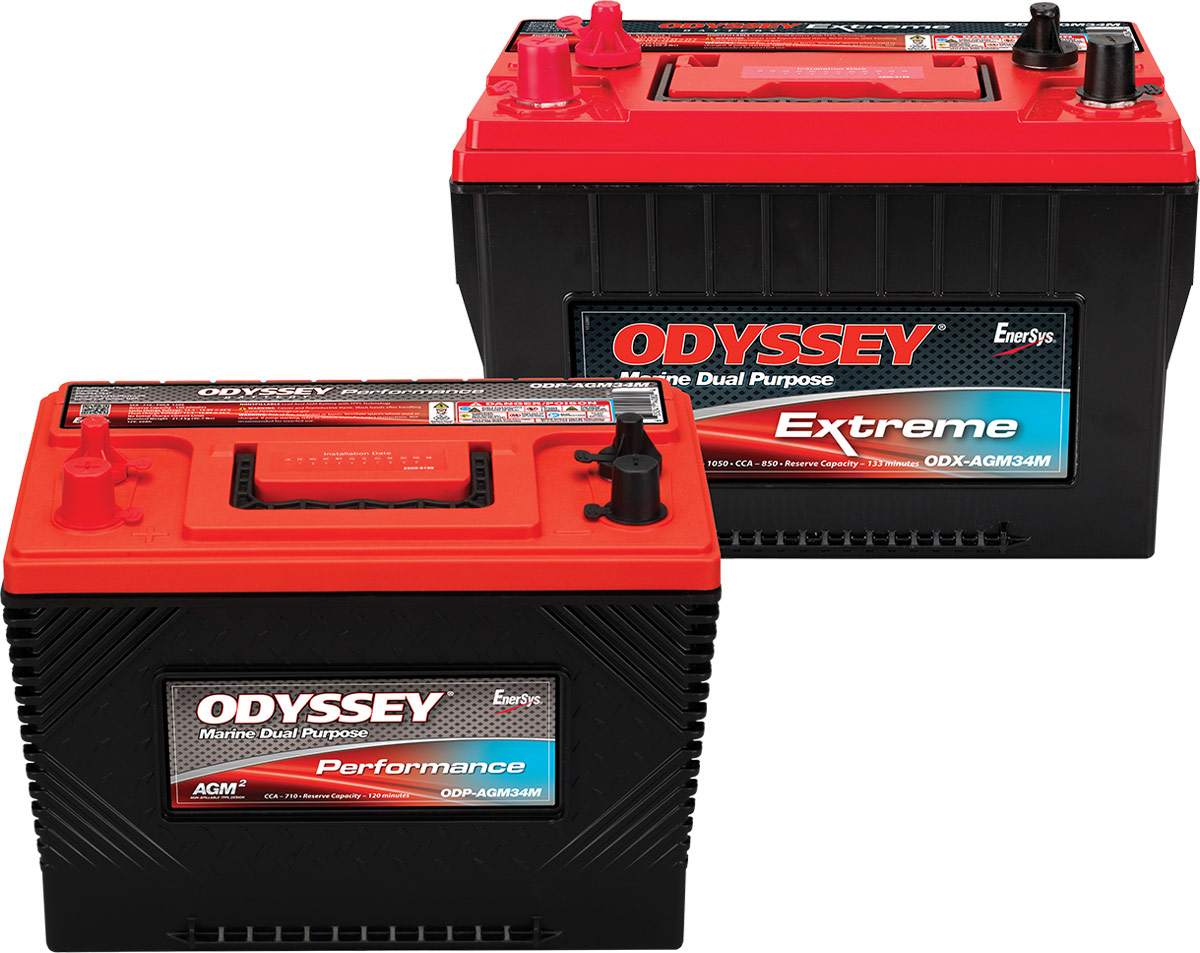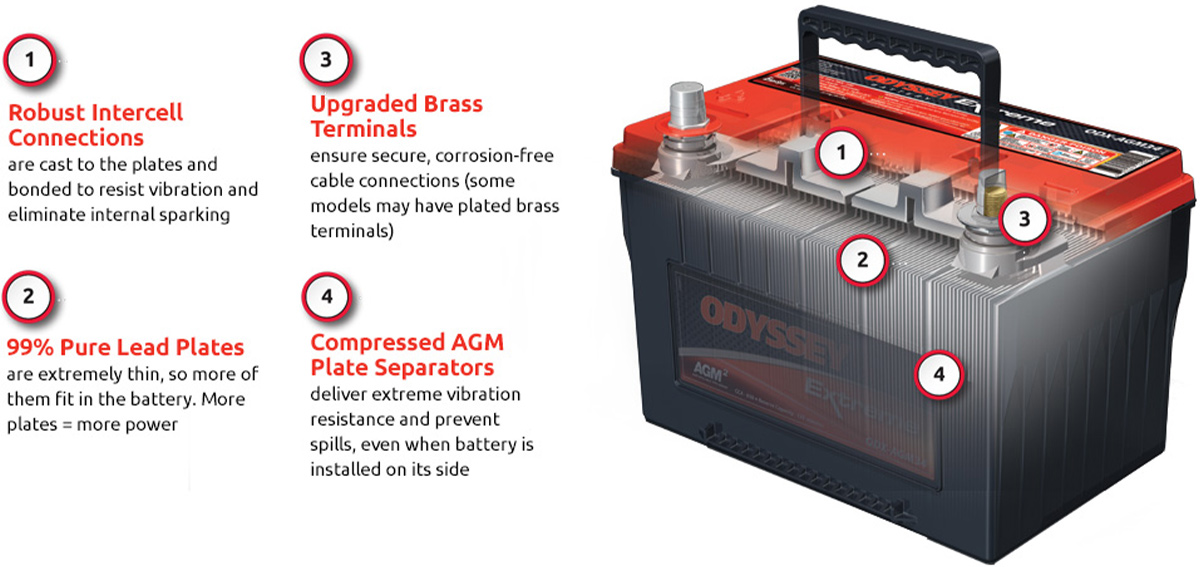Seasonal RV Battery Check-In: Practice Proper Battery Care for Extended RV Storage

If you live in a region where four seasons are a way of life, you’ve already packed away the shorts, flip-flops and t-shirts until next spring. While some campers are “full-timers” and enjoy their recreational vehicles (RVs) all year, many others use them only during warmer months and store the vehicle in winter. In the case of seasonal use, owners should decommission their RVs for storage to help prevent damage from potential exposure to harsh conditions while sitting idle.
Unfortunately, with much of their focus on things like winterizing plumbing systems and “critter-proofing” their rigs, many owners overlook one critical component: the batteries.

Proper Battery Care for Decommissioning
Before the battery is put into storage, it should be inspected, cleaned, tested and charged. Always make sure to follow the battery manufacturer’s guidelines for proper maintenance and care and direct any questions to an appropriate battery professional. Here are some basic steps anyone with a 12-volt battery system should be aware of and put into practice:
- Inspection: Inspect the condition of the battery’s case, cables and connectors for any damage or corrosion. Replace frayed or worn cables and connectors — but if the case or terminals are damaged, also replace the battery itself.
RVs with Internal Combustion Engines (ICEs) are usually equipped with lead acid batteries, most of which use plates made of an alloy of lead and calcium or antimony for electrodes. The electrolyte is a solution of sulfuric acid and water, and in the case of conventional flooded lead acid batteries, is housed in cells. The electrolyte levels in these cells should be checked and, if low, filled with distilled water to the manufacturer’s specified level.
- Cleaning: Clean away dirt and corrosion from the terminals with a battery terminal brush or an emery cloth and wipe down the case with mild soap and water, rinse and dry.
- Testing: Load testing is one method of assessing the battery’s State of Charge (SOC). An auto parts store associate, mechanic or battery dealer can perform a load test at a service facility. Another method uses a digital voltmeter to measure the battery’s Open Circuit Voltage (OCV). The battery manufacturer’s specifications will indicate what OCV corresponds to 100% SOC. For a conventional flooded lead acid battery, a hydrometer will confirm the gravity of each cell, which should read 1.265 – 1.285 to indicate 100% SOC.
- Charge: A full charge is the most important precaution to help safeguard the battery’s performance when recommissioned and through its intended service life. For example, excessive discharge can cause the voltage to decline, which reduces the level of sulfuric acid in the electrolyte. Decreased sulfuric acid increases the amount of water in the solution and, with it, the risk of the electrolyte freezing in cold weather and damaging the battery case.

To prevent internal damage, the battery should not be discharged to less than 50% SOC. Different battery chemistries have their own charging requirements, which are available through the manufacturer or a battery specialist.
Managing Parasitic Loads
If a battery in storage remains connected to an RV’s “house” (or “hotel”) loads — especially those that use memory — it may be drained from parasitic loads. This occurs when those loads continue to consume small amounts of power from the battery, even when the engine is turned off. Each load may consume only a minimal amount of power in a day — but combined over a period of storage, they can drain the battery significantly if it is idle long enough. For example, if a steady parasitic draw of just 20 milliamps occurs while the battery is stored for 150 days, the load will consume more than 70Ah.
One method of maintaining a consistent SOC while the battery remains installed during storage is to use a trickle charger. Batteries should be fully charged before being connected to a trickle charger. An alternative to using a trickle charger is to disconnect the negative battery cable or the terminals, or use a battery disconnect switch, to cut off parasitic loads.
Advantages of TPPL Technology
An RV with a conventional flooded lead acid battery will likely have separate SLI and deep-cycle batteries. Dual-purpose batteries, however, produce both the Cold Cranking Amps (CCAs) for SLI and deep cycling for the longer but lower discharge rates to support hotel loads. Most dual-purpose batteries use Absorbed Glass Mat (AGM) technology, in which fiberglass separators are saturated with the electrolyte and compressed tightly between the lead alloy plates. The battery is sealed, which eliminates the need to replenish the electrolyte with distilled water to make the battery virtually maintenance-free.
An advancement in AGM technology is the Thin Plate Pure Lead (TPPL) battery, such as the ODYSSEY® Dual Purpose RV battery. Pure lead plates can be made thinner for more to fit into the same footprint as a comparably sized conventional lead acid battery. The results are engine-cranking pulses up to 3x that of identically sized conventional batteries for 5 seconds and deep cycling up to 400 cycles at 80% Depth of Discharge (DOD).
TPPL technology also provides ODYSSEY® Dual Purpose RV batteries with a slower discharge rate than conventional lead acid batteries — which results in a shelf life of up to two years at 77°F (25°C) before a recharge is needed. ODYSSEY® batteries also offer the highest recharge efficiency of any sealed battery currently available. These batteries can attain 100% recharge in a little as four hours — and be brought back from 20% SOC to better than 90% SOC in about an hour.
Plus, even if they are stored partially charged, ODYSSEY® batteries tolerate unfavorable storage conditions better than alternative conventional lead acid battery models!
Already a Subscriber? Click here for Access to the Full Issues.


